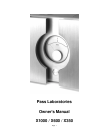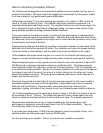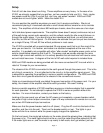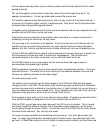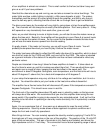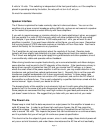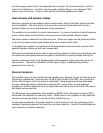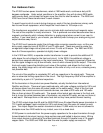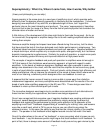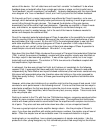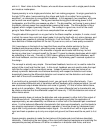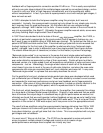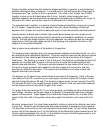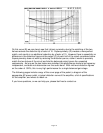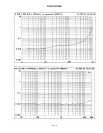Page 5
of our amplifiers is almost non-existent. This is small comfort to the few, but take it easy and
give us a call if you have problems.
Now that the channels are up and running, we can take a moment to note a few things. The
meter lights are blue, subtle lighting in daylight, a little more dramatic at night. The meters
themselves read the amount of current going through the amplifier, and that is why they sit
near the half-way point, reflecting the bias current we run through them to get low distortion.
The bias current seen by the meters will vary slightly, going down a bit as the amplifiers warm
up. Two channels will not always be at exactly the same position. Don’t worry about it. If they
drift upwards or vary dramatically from each other, give us a call.
Later, as you start listening to music at higher levels, you will start to see the meters move up
above the bias point. Basically, the amplifier will be operating in pure Class A at current levels
that do not cause the meters to move. As the current to the speaker exceeds the bias level,
you will see the meter bounce upward from the idle reading.
It’s pretty simple: If the meter isn’t moving, you are still in pure Class A mode. You will
probably be surprised how loud you have to play it before the meter moves.
The meter has been calibrated to reflect the 600 watts idle draw of the amplifier, which is about
one-third full scale for the X1000 and X600, and one-half for the X350. The meter is intended
as a general indicator of the status of the amplifier and has not been calibrated to reflect any
particular values.
People are interested in how long it takes for these amplifiers to break in. It takes about an
hour for them to warm up, and this is where we adjust them first. Then we adjust them again
and again over a couple of days, keeping the bias and offset in the sweet spot. Our
environment is about 23 degrees Centigrade, room temperature, and the heat sinks will rise to
about 22 degrees C. above that, for a heat sink temperature of 45 degrees C.
In your setup the temperature may vary a bit due to line voltage and ventilation, but it is not a
big deal. You should be able to put your hands on the heat sinks without discomfort.
The amplifier has a thermal cutout that will disconnect AC power if the temperature exceeds 75
degrees Centigrade. This should never occur in real life.
The front end of the amplifier draws about 25 watts even in stand-by mode, so the top cover
will always be a little warm. We recommend that you shut the amplifier down using the rear
power switch if the amplifier is going to be unused for any extended period. It will not hurt the
amplifier to be left either in operating or stand-by mode constantly, but it is potentially a waste
of energy.
Again, it is our experience that a 1 hour warm up is adequate for even the most critical
listening experience. Stand-by mode allows a faster approach to optimal conditions as it
keeps the front end circuit fully operational.
More things to know: You can remotely operate the stand-by mode by applying 12 volts DC to
the single pair of 5 way connectors on the rear of the amplifier. The positive of the 12 volts DC
goes to the red connector. This pair of terminals is fully floating and isolated, and drives the
high impedance coil of a 12 volt relay. This connection has an actual operating range of about



